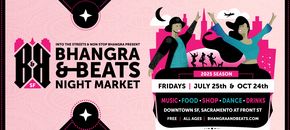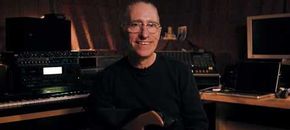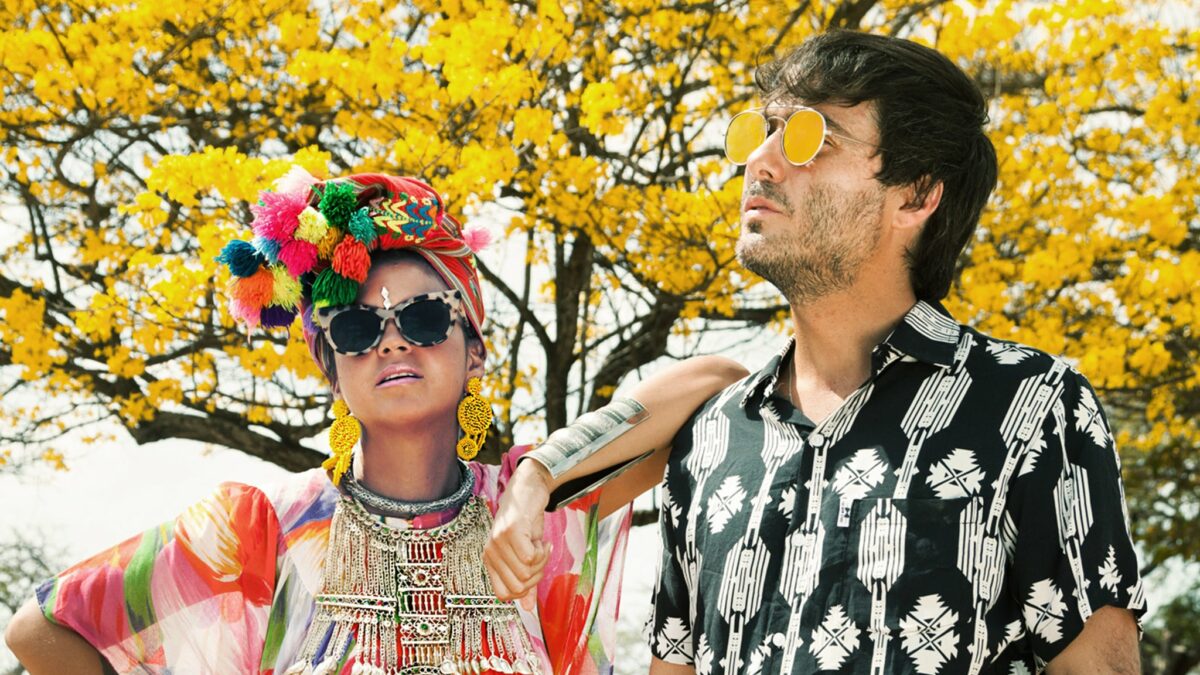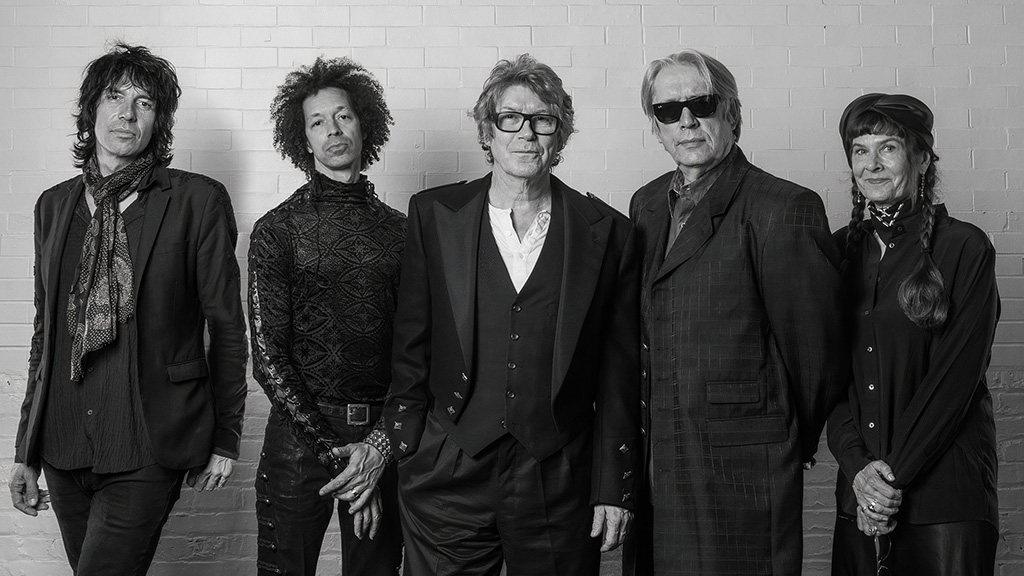Meryl Pataky Talks Neon Before Her Opening at Pt. 2 Gallery
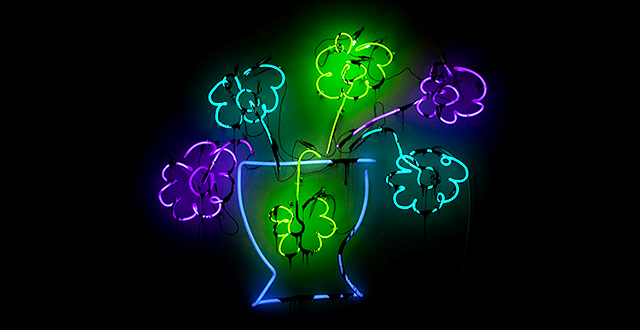
Oakland-based artist Meryl Pataky opens a new solo show entitled Not Long for This World this Saturday, March 9th at Pt. 2 Gallery in her hometown. Using her signature neon bending techniques to create childlike flowers and placing them in a dystopian yet domestic setting, this show will be a step forward for the artist into more personal territory.
Reflecting on her own anxieties around being an artist and starting a family in a precarious world allowed for a break in Pataky’s own restrictions. Having always longed for a more organic process, and having used materials such as tar and paint before, she combines the tight and technical process of neon with a more expressive and fluid painting style, grappling with her own interests and drawing viewers in to see more.
I was fortunate to sit down with Meryl to ask her a few questions and pull apart a few of the layers of meaning around this body of work. You’ll get some insight below, but definitely get out to the show before it closes April 5th.
You’ve had quite a few solo shows, including at Pt. 2 gallery. Why this work? Why now?
I suppose I’ve been feeling more vulnerable and interrogative in my introspection these days. Honestly, I had been feeling down about myself for a little while especially with the consideration of embarking on motherhood came front and center in my personal life. I know most people feel excited, but I’m honest enough to admit that I feel anxious and a bit scared. I suppose there’s nothing like bringing another life into the world that causes you to take a hard look at yourself and your surroundings. I tend to be a bit hard on myself anyway. Being a full time artist, it feels scary to think about providing for a child and having the time to make the work that will hopefully provide. In addition to that, I think a lot about all of our futures on this Earth and whether or not it’s selfish of me to want a child. This show is a reflection on about a year’s worth of self-talk, an experiment in more fluid and organic ways of working with this normally structured medium and a practice in releasing control.
You are a meticulous craftsperson and this show has a wide variety of materials. Tell us about those materials and why you chose them.
My primary medium is neon, as in glass tubing filled with noble gas. Despite my layered relationship with neon, I consider it to be my business partner and my life partner and will likely never part ways with it. It has taught me so much about myself and I grow as a craftsperson and a human with it in my life. Another material that I picked up the last year was resin to make oozy, tar-like drips on the surface of the glass. The material is meant to represent tar, which is found in ballast type power sources. When the power source malfunctions or dies, it leaks the tar everywhere. I fell in love with the idea that neon is alive and so are the mechanisms that power it. I feel much about neon and the process of making it contains many parallels with living and life, and we can’t talk about the human condition without considering death. The resin contains petroleum, which aligns with my views on our environmental future and my anxieties about bringing new life. Other materials I introduced into my practice this time was paint and other drawing tools like crayon. These materials are foreign to my regular practice because I’m not an illustrator or a painter, yet sometimes wish I could. I felt the urge to step outside of my comfort zone and release control in my process, to go through those periods of dis-comfort and try and to make decisions in that space.
Good ol’ Bob Ross told us, “There are no mistakes, just happy accidents.” What happy accidents did you run into while creating work for this show?
I’m really glad you asked this question. In fact, the biggest “accident” was how much hope came through in the work despite the work towards a dystopian vibe. Light has a way of doing that, I guess. I think the juxtaposition is great and it really was an accident. I was visualizing anxiety and self-doubt during the entire conceptualizing process, designing the exhibition experience was about darkness – I was surprised to see so much hope shine through when the works materialized.
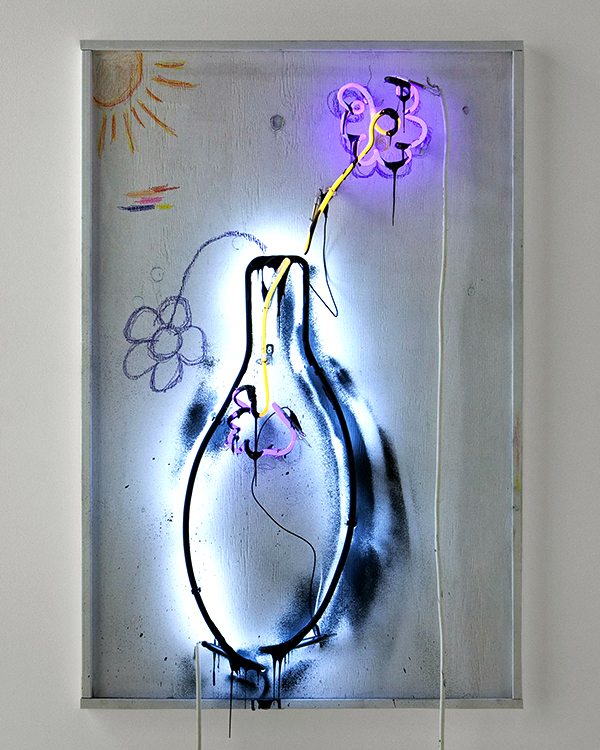
Why the interest in flowers? Why did you decide to depict some in neon and some in paint?
Flowers are ubiquitous in art. So many artists have used flowers as imagery in their works since, forever? They’ve been used to symbolize many things but what stands out to me as the most “correct” are ideas like – fertility, nature and life. My flowers are those that I used to draw as a kid. I found them to be the perfect thing to depict the thoughts on my own fertility and motherhood as well as ideas around the state of nature and our world. Additionally, I have been thinking about my own childhood in this process, the mother I lost along with any intimate or symbiotic teachings on how to be a mother. The image of child-like flowers evoke a feeling of innocence and maybe naïveté. Those child-like flowers doused in black ooze, I hope, causes us to think about the passage of time, lost memories, the effects of our being on others, our future.
Why did you title it “Not Long for This World”?
If someone or something is “not long for this world”, it means they are meant to die soon. Normally it’s an idiomatic phrase meant to describe people, things, or other inhabitants of our world. In this context, The World is the subject of this idiom and also present in the phrase, which I find interesting. The idiom was never meant to describe the actual world, but if we were to now, it would make complete sense.
Neon is frankly really popular right now. How do you cope with the fact that you see neon everywhere? What are you doing differently?
I have mixed feeling about it, naturally. Clearly it’s a great thing for any trade when its medium becomes popular or in demand. It means more tradespeople have jobs. I do find the trendiness of neon to be problematic in a variety of ways, however. One relevant example is that its popularity has given rise to many “neon alternatives” that are harmful to our industry and the planet, despite their marketing pitches. LED’s, for example, are more harmful to the planet than they tell people and most consumers aren’t educated about neon to know the difference between the two or in order to make a consciuos decision about what they consume. I think the same can be said of most consumption in the world. I hope to continue working on education people through my social platforms, through the exhibition I curate (She Bends) and through the work I make. I try and take neon to different places outside of the sign and the poetic truisms saturating the market currently.

